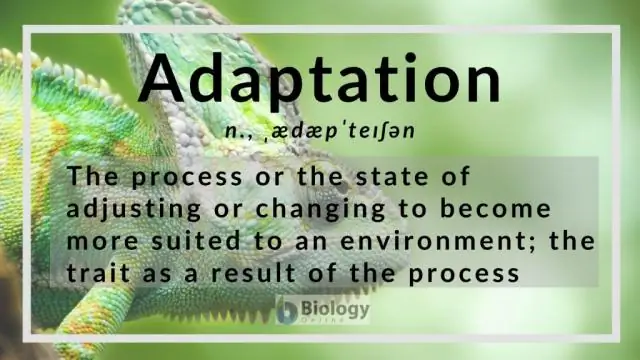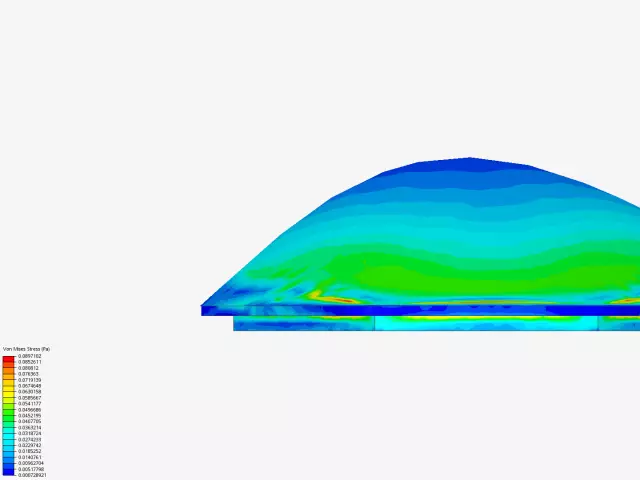- Author Rachel Wainwright [email protected].
- Public 2023-12-15 07:39.
- Last modified 2025-11-02 20:14.
Sensitization

Sensitization is an increase in the sensitivity of nerve centers under the influence of an irritant. Increased sensitivity can occur while waiting for a significant signal, gaining experience, or as a result of exercise. It can be due to specific requirements of the activity or due to compensation of sensory defects. An example of sensitization in the first case is the high sensitivity of the artist's eye to the proportionality of forms and the consistency of colors and shades. In the second, it is an aggravation of hearing and remote sensitivity to obstacles in blind people.
Sensitization, adaptation, and synesthesia are directly related to changes in the sensitivity of analyzers and relate to the qualitative characteristics of sensations.
Sensitization of sensations
Sensitization of sensations is an increase in sensitivity that occurs under the influence of the following internal factors:
- Systematic work of analyzers and their interaction. At a low intensity of sensations of one modality, sensations of another modality are enhanced. For example, with a slight cooling of the skin, light sensitization appears;
- Pharmacological effects on the body. The introduction of various substances, such as adrenaline or phenamine, causes a significant aggravation of receptor sensitivity;
- Psychological attitude. Waiting for an event, especially a significant one, can tune in to a clearer perception of stimuli. So an upcoming visit to the dentist can provoke an increase in toothache;
- Experience gained. In the process of performing one or another activity, certain sensory systems gradually develop. An example of sensitization can be experienced tasters who conduct sensory analysis on subtle nuances, or musicians who distinguish by ear the relative duration of notes.
As a result of strong excitation of some analyzers, a decrease in the sensitivity of others can occur. Desensitization is typical, for example, for workers in industrial workshops, as high noise levels slightly impair vision.
Compensatory sensitization occurs with oppression or absence of various types of sensations, when this deficiency is compensated for by increasing the sensitivity of other analyzers. For example, hearing improves in the dark.
Sensitization and adaptation
If sensitization is associated exclusively with an increase in sensitivity, depending on psychological or physiological factors, then adaptation is due to the environment and is characterized by both intensification and weakening of sensations. Adaptive abilities are manifested, for example, when there is a sharp change in the level of lighting - it takes some time for the eyes to adapt to darkness or bright light.
According to the severity of sensations, there are 2 types of adaptation:
- Anesthesia. It arises with prolonged action of the stimulus, which leads to the complete disappearance of sensations. For example, during the day, people do not feel the touch of clothes or pay attention to the wedding ring;
- Dullness of the intensity of feelings. It is expressed as a reaction to strong stimuli. It can be addictive to a pungent odor in a healthcare facility or a perfume store.
The synthesis of adaptation and sensitization is carried out during the structuring of disordered elements. Painting up close can look like chaotic spots of color in which the painting becomes visible over time. In continuous background noise, individual sounds can also be gradually discerned. That is, in the process of getting used to an intense external stimulus, it becomes possible to analyze it, and the focus of attention on individual elements contributes to an increase in susceptibility to them.
Sensitization and synesthesia
Sensitization and synesthesia are closely related properties of sensation. With synesthetic perception, irritation of one sense organ is accompanied by sensations corresponding to another organ. The most common example of modality change sensitization is the sourness of lemon. Also, visual images often appear while listening to music or reading. From a neurological point of view, this phenomenon is explained by the fact that the excitation of nerve structures irradiates from one modality to another, resulting in the formation of many synesthetic sensations - "color" hearing, "taste" of words, "smell" of color and other variants. Synesthesia is also considered to be the basis of metaphorical assessments and transferences.

Sensitization of sensations can be manifested by comparing various stimuli. For example, a light shape on a black background will appear white. An area of gray on a green background will appear reddish, and on a red, on the contrary, it will acquire a green tint. Vertical lines appear to be longer than horizontal lines when objectively the same length. The contrast of sensations is often played up in advertising, painting, clothing and interior designs.
Research shows that sensitization also depends on the following factors:
- Age. The increase in receptor susceptibility lasts up to 30 years and subsequently slowly decreases;
- The type of the nervous system. People with a weak nervous system, who do not have endurance and stability, are more prone to sensitization.
- Endocrine balance of the body. Sensitization of the olfactory sensations is observed during pregnancy.
Temporary sensitization is due to the inhibitory state of the cerebral cortex, which occurs during overwork.
Perception is involved in shaping behavior. The change in the sensitivity of the analyzers and the interconnection of sensations provide the receipt and processing of information about the surrounding world.
Found a mistake in the text? Select it and press Ctrl + Enter.






